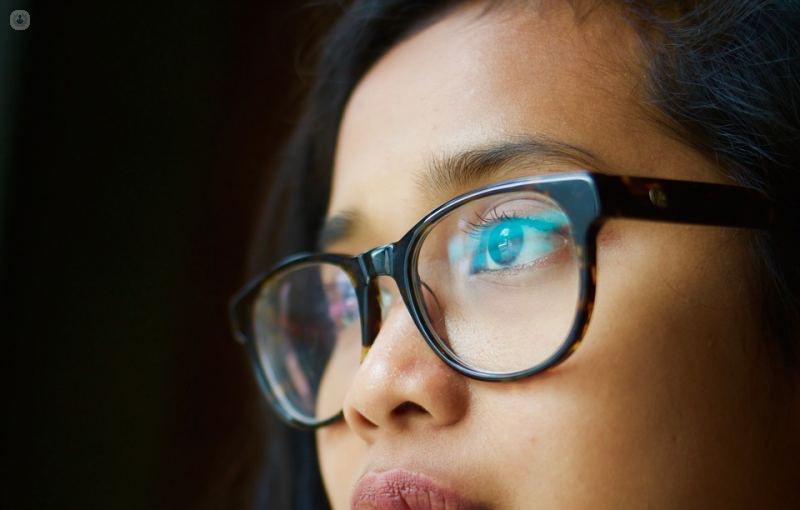

What is presbyopia?
Commonly known as tired eyes, presbyopia is the loss of accommodation, the ability to maintain a clear image of an approaching object. In other words, presbyopia the increase in optical power, for example, we need to use 3 dioptres to focus 33 centimetres away.
It is estimated that by 2020 there will be 2.3 million people with tires eyes.
Disease prognosis
Tired eyes develop gradually and evolve over time. It can be treated with temporary or permanent techniques, so prognosis will depend on the technique used, even though it isn’t a serious condition.
What are the symptoms?
Presbyopia can cause the inability to focus up close; it can also cause headaches when looking at a book or computer screens.
Tests for presbyopia and accommodation
The specialist will study the patient’s ability of accommodation (near focusing), measuring the amplitude and the monocular and binocular accommodative flexibility. If the ability to accommodate is unbalanced, exercises that have been proven to work will be recommended. These exercises involve reading visual therapy at close vision with positive and negative different strength lenses. Flipper training for short distance or changing focus from long to short distance using the Hart Chart is also used, among other techniques.

What causes it?
Tired eyes occur due to a loss of lens elasticity, which is the eyes natural lens for focusing on objects. Over time, the lens loses elasticity and the ability to focus.
How can it be prevented?
Tired eyes can’t be prevented as it is a condition associated with the ageing process. Even so, it is important to have your eyes tested regularly, especially after the age of 40, to detect any age related conditions.
What is the treatment?
There isn’t a permanent treatment for tired eyes, there are however techniques to compensate for loss of focus. The most common one is glasses, and there are different types of lenses according to the issue:
- Bifocal lenses: for far and near vision.
- Trifocal lenses: for short, medium, and long distance vision.
- Progressive lenses (also called multifocal lenses): the upper part of the lens is for distance, the lower part for near, and the middle part for all distances.
- Occupational lenses: for short and intermediate distances; particularly suitable for people who work with computers.
Even so, surgery is quite often used to get rid of tired eyes. There are different techniques:
- Laser surgery: the cornea is moulded to increase the depth of focus and compensate for the loss of focusing ability.
- Intracorneal lens implants: are placed on the cornea and change the corneal curvature to address the inability of accommodation.
- Intraocular lens implant: the lens is replaced by an intraocular lens, which can be monofocal, bifocal, or trifocal, depending on the distance reach needed.
What specialist should I see?
Tired eyes should be treated by an ophthalmologist.
